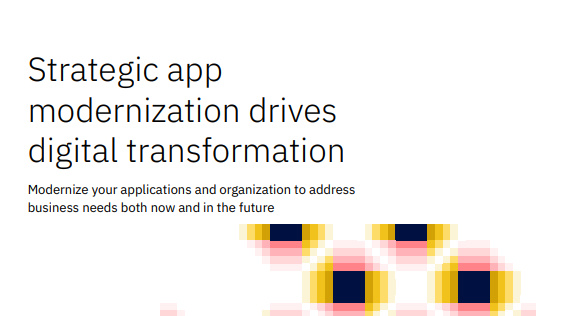I'm a professor in HR management – here are three things every business gets wrong about digital transformation
Most businesses are focussing too much on 'doing digital' rather than 'being digital' – it's no wonder that the majority of digital transformation projects fail


Most organizations worldwide will have at some point embarked on the formidable journey of digitalizing their business processes. This digital transformation journey is one often marked by a sense of bewilderment, confusion, emotional exhaustion, and significant financial investments.
In fact, most business leaders believe their digital transformation efforts are failing or becoming directionless. According to research from Microsoft, 71% of business decision makers said that their company failed to deliver on the promises outlined in the original project brief, and 69% of respondents reported feeling overwhelmed by the volume of new technology solutions being introduced.
What's more, a report by McKinsey found that although 56% of organizations reported meeting their digital transformation goals, only 12% said they were able to sustain these goals for more than three years.
So, what's going on here? In short, businesses too often think of digital transformation simply in terms of shifting technology, and fail to embrace the fundamental cultural shift that is required to sustain such a dramatic change.
Here are three key areas that I believe every business should be looking at if it hopes to achieve success during its digital transition, and maintain that success in the long term.

Dana Minbaeva is a Professor of Human Resource Management at King's Business School, King’s College of London. Her research covers Strategic International Human Resource Management, Human Capital Analytics, and Digital Transformation. She also has first-hand experience consulting with companies on their own digital transformation projects.
1. They focus on upgrading digital infrastructure rather than creating better value for customers
In the digital circus, the end should be solving a business problem. Brace yourselves for a revelation: the purpose of business is to serve customers and, oh yeah, create and deliver value. Shocking, right? Yet, many leaders miss the memo, blinded by the allure of flashy tech.
In every industry, digital technologies have had a profound effect on how organizations both create and deliver value to their customers. It’s no longer about organizational positioning, functional efficiencies, organizational processes, or structures. It’s about creating information-enriched customer solutions delivered as technologically seamless, personalized experiences.
Sign up today and you will receive a free copy of our Future Focus 2025 report - the leading guidance on AI, cybersecurity and other IT challenges as per 700+ senior executives

Don’t get me wrong: a digital facelift, i.e. achieving operational excellence using the advances offered by digital technologies, is needed for all organizations. However, ‘doing digital’ is hardly enough.
The starting point of any digital transformation project should be ‘being digital’ – continuous search, innovation, and experimentation to ensure that employees can deliver a new customer experience.
‘Doing digital’ and ‘being digital’ are two connected but fundamentally different processes. Doing digital is about doing things better, introducing changes in how we currently deliver business value, a kind of technological makeover or face-lifting. Being digital is about fundamentally transforming how we create business value.
2. They approach it as an IT upgrade project, rather than a cultural change
Consultants often highlight that the success of strategic transformations hinges on various factors, including industry dynamics, organization size, market conditions, and specific transformation goals.
My experience working with companies on this has revealed a significant trend: companies that view strategic digital transformation as a cultural change tend to achieve greater success compared to those approaching it as a digitalization challenge.

In essence, the success of Mærsk's strategic digital transformation lay not just in the embrace of technology, but in the profound cultural shift that accompanied it.
Consider the case of Danish shipping multinational A.P. Møller – Mærsk. Despite a long history of global success, the family-owned conglomerate faced its lowest results ever in 2015 – financially, operationally, and organizationally. In response, a new CEO and senior management team launched an ambitious strategy in 2016, aiming to transform this asset-heavy giant into a digital powerhouse in its core business.
RELATED RESOURCE

Accelerate your digital transformation with the right tools
DOWNLOAD NOW
Recognizing that the ambitious business strategy required fundamentally different organizational capabilities, they appointed a new chief human resources officer (CHRO). This CHRO strategically framed the transformation as a cultural change, involving the redefinition of leadership and the revitalization of the performance management system.
This shift saw the company depart from its traditional organizational culture without compromising any of its core values – a challenging and sometimes painful process.
This proved instrumental in enabling digital transformation. The organization created an essential alignment between a digital core, renewed organizational capabilities, and a people strategy designed to deliver on those capabilities. In essence, the success of Mærsk's strategic digital transformation lay not just in the embrace of technology, but in the profound cultural shift that accompanied it.
3. They apply “pipeline logic” and last-century models in managing change
Pipeline logic has been dominating strategy discussions for many decades. Essentially, most strategy and change models from the last century focus on creating value by controlling a linear sequence of activities.
Think of this as the classic value-chain model. You start with inputs at one end, go through a series of steps, and end up with an output that's worth more: the finished product. This linear approach has a clear beginning and end, which is why consultants often use the Everest analogy with base camps and milestones. There's also a clear sequence – the well-known "unfreeze, change, refreeze, and live happily ever after" dogma in change management.
This pipeline logic encourages leaders to optimize an internal chain linking inputs and outputs. It works well in stable and predictable situations with standardized jobs and clear structures.
However, due to the fast pace of change, volatility, and unpredictability in the business environment, relying solely on this approach to manage digital transformation can lead to project failure.
It's time for organizations to shift their thinking – it's not just about having a digital strategy; it's about embracing what we call "ecosystem governance". Think of it as a way to keep your organization's value proposition fresh and perhaps expanding, thanks to ongoing innovative activity aimed at creating information-enriched customer solutions.

Consider Hempel Marine's digital transformation, which centres around addressing the sustainability challenges faced by their customers. They are no longer in the business of selling paint. Their commercial teams have shifted to becoming the foremost decarbonization specialists in the marine industry – a sector known for substantial contributions to CO2 emissions.
Ultimately, digital transformation is no longer just about your organization. Your goal is to maximize the total value of a growing ecosystem in a circular, iterative, feedback-driven process. Sometimes that might involve supporting one type of consumer to attract another. Often, it requires rethinking how you do business with all your suppliers and customers.
But, without a doubt, it calls for a new kind of leadership – ecosystem leadership, a strategic effort, and investment game to influence, control, and guide other (potential) players, all to establish and maintain a robust ecosystem.

Dana Minbaeva is a Professor of Human Resource Management at King's Business School, King’s College of London. Her research covers Strategic International Human Resource Management, Human Capital Analytics, and Digital Transformation.
-
 Red Hat eyes tighter data controls with sovereign support for EU customers
Red Hat eyes tighter data controls with sovereign support for EU customersNews The company's new offering will see support delivered entirely by EU citizens in the region
-
 Is enterprise agentic ai adoption matching the hype?
Is enterprise agentic ai adoption matching the hype?In-depth Despite reassurance and encouragement from vendors, many companies are putting their agentic AI plans on hold
-
 IT professionals are the new guardians of ethical tech – but which global model should you follow?
IT professionals are the new guardians of ethical tech – but which global model should you follow?Opinion IT professionals are becoming the moral and ethical torchbearers in society, spearheading not only technological innovation but also societal responsibility
-
 Big Tech's incursion into finance raises key questions surrounding control, competition, and data privacy
Big Tech's incursion into finance raises key questions surrounding control, competition, and data privacyOpinion Consumers are risking over-reliance on a small number of major tech companies for the sake of payment convenience
-
 The five skills every IT recruiter wants in a candidate
The five skills every IT recruiter wants in a candidateOpinion Exploring both what tech employers are prioritizing when it comes to recruitment, and what skills job seekers should be focussing on to maximise their chances
